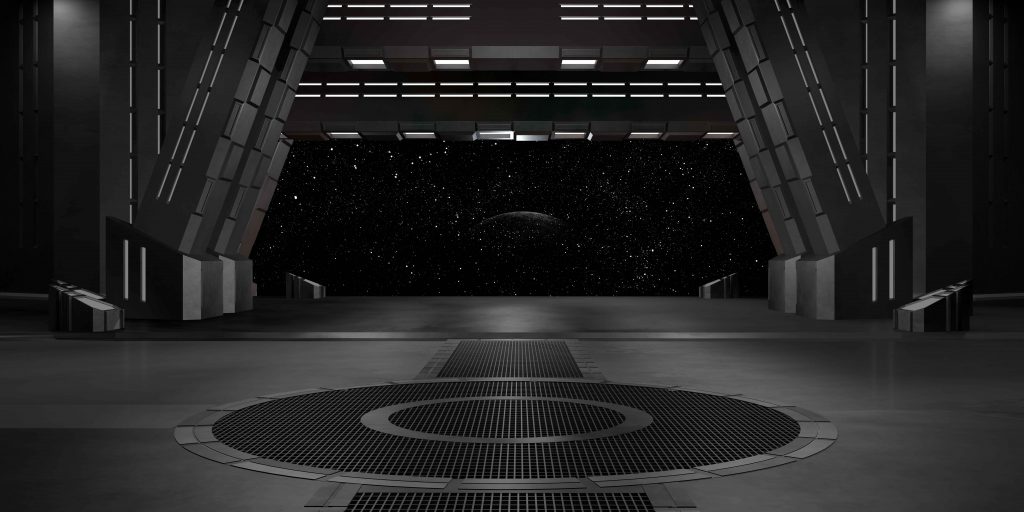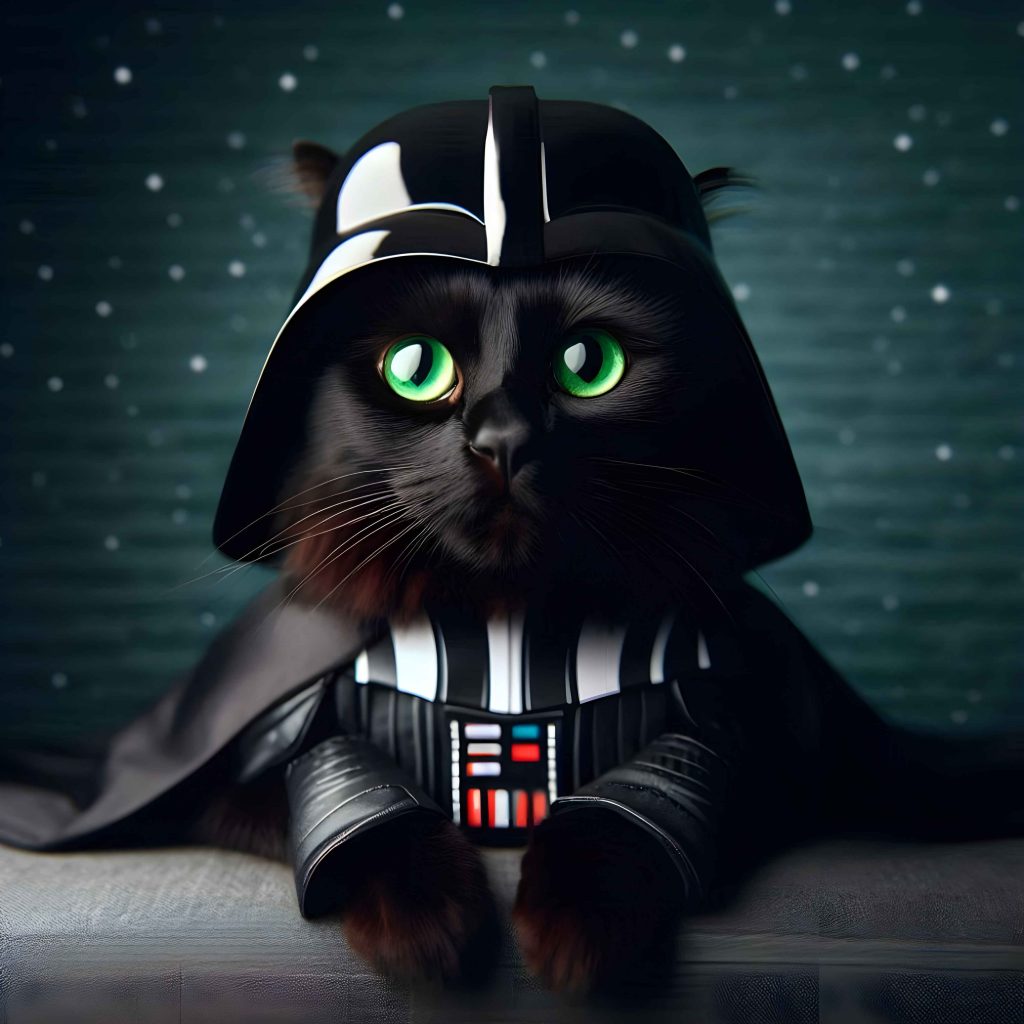The IP Strikes Back: Lucasfilm, Disney, and the Power of Copyright in a Galaxy, Far, Far Away
Disclaimer: This blog post is for information only. We do not endorse any of the merchandise and we are not affiliated or receive any commission from any companies presented in this blog post.

With the new lawsuit brought by Disney and Universal against Midjourney, the Emmy snub regarding Andor, and the many new and exciting movies and series coming in a cinema / streaming platform near you, we decided to have a look at the Galaxy, Far, Far Away and the IP Empire it created.
The Power of Intellectual Property in Entertainment
Think about your favourite film or character in the Star Wars franchise. Now imagine it being tightly wrapped up in Intellectual Property (IP) protection. For its own good, mind you. Now you might disagree with the amount of protection given to the Star Wars franchise, but what if I told you there would be no Star Wars franchise, or any other franchises out there without the tight protection of IP.

When it comes to the entertainment industry and protection of IP, one of the first protections applied is copyright. It safeguards films, TV series, songs, screenplays, set design, and so much more. You can read more about copyright in films, in our previous blog post, Popcorn and Permissions: Understanding Film Licensing for UK Higher Education Screenings. As an example, copyright law makes sure that a film is protected from unauthorized distribution and duplication, basically protection against piracy. That doesn’t mean piracy does not happen, but it does mean that those who pirate can be held responsible and their sites shut down.
Other IP protection within the entertainment industry are trademarks, patents, design rights and of course performers rights. Let’s have a quick look at those:
- Trademarks – trademark registration makes sure that certain products and services will be associated with that specific brand. Star Wars is a registered trademark, as such most consumers will associate anything with the Star Wars name to the Star Wars brand, like Star Wars Rogue One. Also to note here, that Star Wars Rogue One is also a registered trademark. Sometimes, characters and character names can be trademarked. While Cassian Andor is not a trademarked name, Han Solo is.
- Patents – protect innovations and other ‘creations of the mind’. For example, did you know that Lucasfilm registered its very first design patents for a toy figurine based on Boba Fett in 1982?! However, not just characters are patented from a galaxy far, far away, but also things like three-dimensional motion capture.
- Design rights – protect the visual appearance of a product. Here we can look at set designs, costumes, blasters, X-wings and TIE fighters.
- Performer’s rights – are non-property rights and property rights, relating to live and recorded performances, and moral rights. Some similar rights are given to companies with exclusive recording contract with the performer. This type of rights exists for performances made in, or by subjects or residents of the UK, Channel Islands, the Isle of Man, Gibraltar or one of the British Overseas Territories. Same applies to any member state of the EEA. For performers and performances made in other countries, the level of protection depends on whether the country is a signatory of different treaties or if the country is a member of the World Trade Organisation (WTO). Examples here can be Genevieve O’Reilly’s performance as Mon Mothma or Diego Luna’s performance as Cassian Andor.
Lucasfilm’s Legacy and IP Strategy
In 1971, filmmaker George Lucas founded Lucasfilm and incorporated it as Lucasfilm Ltd. in 1977. Lucas also founded the Star Wars Corporation, Inc. as a subsidiary to control the various legal and financial aspects of Star Wars, like copyright and sequel and merchandising rights. In subsequent years, the subsidiary was absorbed into various Lucasfilm divisions.

To protect the IP spawning from a Galaxy, Far, Far Away, many things, from characters, planets, space tech devices, and vehicles, be it flying ones or terrestrial ones, have been registered as a trademark by Lucasfilm Ltd. Other trademarks include but are not limited to:
- Characters – Luke Skywalker, Yoda, Darth Vader, etc.;
- Species – “Wookie” or “Ewok”;
- Phrases such as “May the Force be with you” or “May the 4th be with you” and “May the Fourth be with you”;
- Generic terms – bounty hunter. We are also a bit confused about the last one, generic terms are usually not trademarked, but it seems the Force is strong with this one.
All in all, Lucasfilm has over 205 patents, 1,077 individual trademark applications and 3,489 registered copyright (in the US you can register copyright, not required in the UK).
Registering all this IP is not only to continue to protect the Empire but also to be able to create a plethora of merchandise, from toys, video games, comic books, clothing and furniture. I mean who doesn’t want a Millenium Falcon rolling desk chair?!
Disney’s Acquisition and Expansion
Disney acquired Lucasfilm Ltd. in 2012, after George Lucas announced his intention to retire. Under the deal, Disney acquired the Star Wars and Indiana Jones franchises, as well as Lucasfilm’s operating businesses in live-action film production, consumer products, video games, animation, visual effects, and audio post-production.
Disney continued the expansion of the Star Wars universe, with some standalone films, like Rogue One (2016) and Solo: A Star Wars Story (2018). Rogue One has seen a resurgence after the last episode of Andor Season 2. I must admit, the first thing I said after we watched the last episode of Andor was, “We are watching Rogue One this weekend”.
After the mixed response of Solo at the box office, there was a slowdown in release of new Star Wars films, and Disney concentrated more on developing content for their Disney+ streaming service, launching shows like The Mandalorian, Ahsoka and Skeleton Crew.
And so, the expansion of the IP Empire continues, with more new characters for action figures, toys and LEGO.
Case Studies and Controversies
Lucasfilm Ltd. LLC et al v. Brown
Lucasfilm Ltd. LLC, a subsidiary of Disney, took Michael Brown to court in 2016 over trademark infringement of the Jedi logo, as well as false designation of origin, federal trademark dilution, cybersquatting and many other claims under Californian state laws. Michael Brown operated a business called New York Jedi, the Lightsaber Academy and Thrills and Skills. The Academy would teach people the way of the Jedi, and how to wield a lightsaber.
Lucasfilm Ltd. v. High Frontier
In 1985, Lucasfilm took the Ronald Reagan administration to court following their use of the term “Star Wars” in relation to the development of a space-based laser that would shoot down incoming ballistic missiles launched from the Soviet Union(yes, you did read that right). In the media, the plan was referred to as “Star Wars”. Lucasfilm took the company working with the Reagan administration, High Frontier, to court over trademark infringement. Unfortunately, it lost the case as the judge concluded the term “Star Wars” was used as a parody.
In 2004, Lucasfilm took Andrew Ainsworth, a prop designer from the UK, who originally designed and manufactured the stormtrooper helmets and armour used in the 1977 film “Star Wars: A New Hope”. He started selling replicas in the UK and globally which caused Lucasfilm to sue for copyright infringement. This case is interesting in highlighting the territoriality of copyright. While the US court sided with Lucasfilm, in the UK, Ainsworth successfully argued that the suits are utilitarian in nature as such copyright does not apply (copyright does not apply to objects which are utilitarian, or have a purpose, like chairs). Meaning simply, that he can continue to sell the replicas anywhere in the world, except the US.

The Future of IP in a Galaxy Far, Far Away
With more films and series coming near you from the Galaxy Far, Far Away, we are sure that there will be more characters and designs to love and protect. Disney, and Lucasfilm, have a good knowledge of how to protect their IP and create new characters to love and protect. Oh, and did I mention all the cool and cute merch?!
Whether you are a fan or just discovering the beautiful and terrifying worlds, of a Galaxy Far, Far Away, you will not be disappointed by the sheer imagination, the amazing set designs, the fantastic costume designs, the performances of the actors, be it that they are recognizable as humans or are just very funny droids (K-2SO played by Alan Tudyk). And as boring as it all sounds, and as frustrating as it can sometimes feel, all of these are rightfully protected by a vast array of IP rights. What does the future hold for a Galaxy Far, Far Away?! Well, as Master Yoda said so wisely, in The Empire Strikes Back, “Difficult to see; always in motion is the future”.
Welcome to the Rebellion! (Cassian Andor, in Andor, ep.9, Season 2)
Small businesses and fans often unknowingly infringe on Disney and Lucasfilm’s IP, and there are many voices that bemoan the way Disney and its subsidiaries protect their IP. However, when films like Winnie-the-Pooh: Blood and Honey are created, can you really hold it against them?! As one critic of Blood and Honey put it: Makes you wish the Supreme Court would repeal its public domain copyright laws. Another critic made their view very clear as well, stating: There aren’t any copyright issues with the material but [Rhys Frake-Waterfield] has no right to do what he did with it.
So, what is there to do?! In more general terms, respect other people’s IP (especially if it is still protected, but also maybe just a little bit, if it isn’t) quoting Yoda, from the Empire Strikes Back: “Do. Or do not. There is no try.”
Lucasfilm Ltd. LLC have worked hard for the world in Star Wars, and it is their right to protect it, tooth and nail. Don’t believe me? Watch a Making of Andor Season 2 to see the amount of work that has gone into creating the Star Wars universe in Andor. Whatever you think of Disney and its subsidiaries, one thing is for sure, their IP strategy is on point.
If you like movies, why not log in to your Libby account and enjoy our vast array of magazines presenting all new films and series!

Or why not have a read of all the Star Wars magazines?!

We hope you enjoyed this blog post, and if so, why not subscribe to our monthly digest?!
May the Force be with you!

The information contained in this blog post should be taken as recommended advice or guidance but should not be taken as legal advice. If in any doubt, please seek proper legal advice.
Open Research
Copyright, Open Access and all things Open Research
Join the discussion
2 Comments
Audio to Text
It’s interesting how IP laws not only protect against piracy but also shape how franchises like Star Wars are allowed to expand. Do you think the trend of aggressively protecting IP will stifle creative exploration in the long term?
Cristina Rusu
Thanks for you comment. It is difficult to say, tropes are not protected, so anyone can create a story set in space fighting an evil empire, as long as it doesn’t involve any protected IP. We have Star Trek and Battlestar Galactica as examples. I always think that you can come up with something new and creative without having to use someone else’s IP, otherwise it isn’t really new or creative. Doesn’t mean that reimagining’s can’t be good. I think that there is a very fine line between protecting your IP and maybe going slightly over board with it.